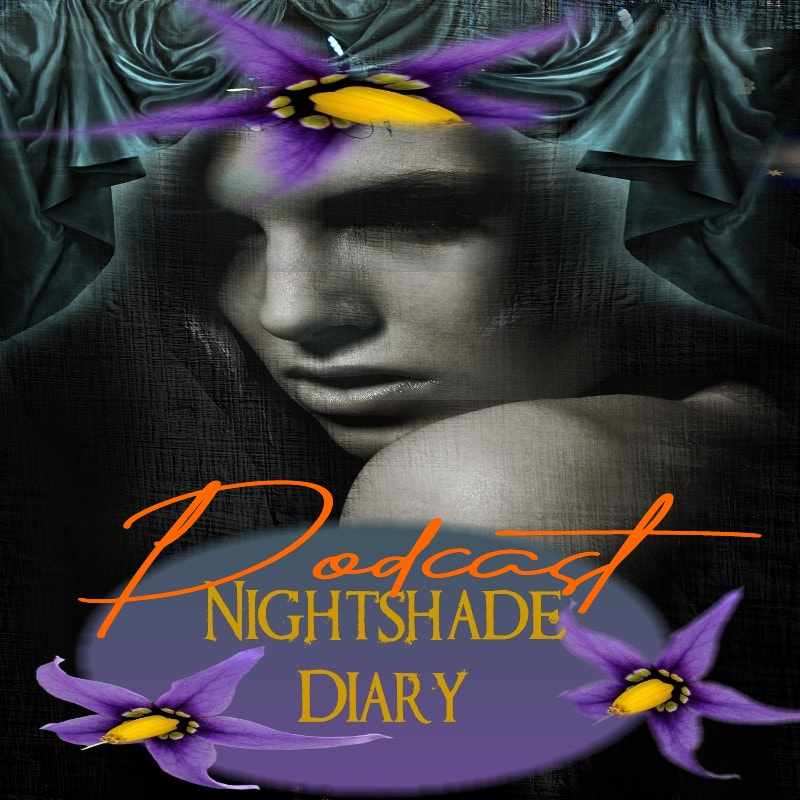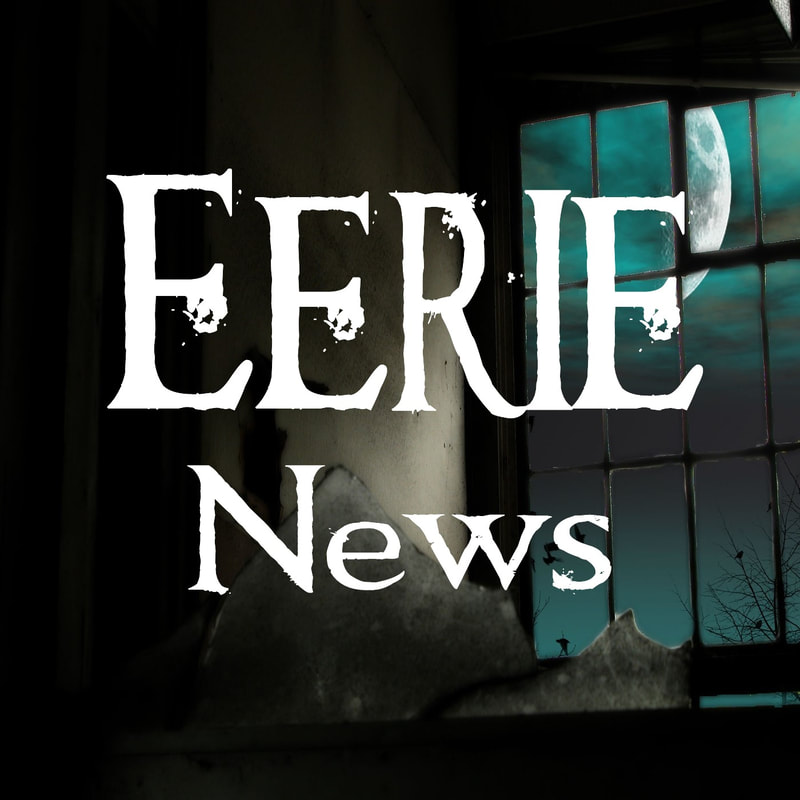 By M.P. Pellicer | Stranger Than Fiction Stories White cottages were found under the live oaks at Ponce Park, which was known for being the haven of women with children, and anglers who came to fish. This normally placid place was stirred up when seven skeletons were discovered by postmaster Frank Stone when he dug up his back lot.  Portrait of Dr. Andrew Turnbull, founder of the New Smyrna colony (c. 1750s-60s) Portrait of Dr. Andrew Turnbull, founder of the New Smyrna colony (c. 1750s-60s) PONCE PARK, DAYTONA, FEBRUARY 1, 1915 Stone had been "grubbing" some palmetto, live oak and bay bushes near the east line of his property, and along the road leading south to the Ponce de Leon Inlet lighthouse. He broke the skull with his hoe, and once he realized it was a cranium he began a careful excavation. The entire skeleton was unearthed, and he kept digging and finally exhumed seven skeletons. Capt. B.J. Pacetti thought they may have been the crew of a wrecked sailing vessel, who were massacred by Indians. Others believed they were the unfortunate members of Dr. Turnbull's colony. 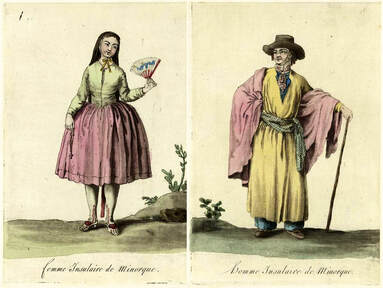 Minorcans c.1787 Minorcans c.1787 In 1764, the British Parliament set aside £500 (British pounds sterling) as a bounty for cultivating silk, cotton, and indigo in East Florida, and authorized generous land grants for citizens who volunteered to travel and develop these industries. Dr. Andrew Turbull, a Scottish physician convinced several of his wealthy British friends to start the new colony. His plans were to employ Greeks from Asia Minor as laborers, since they were accustomed to a warmer climate. At this time conditions were difficult for the Greeks due to living under the rule of the Ottoman Empire. Turbull was knowledgeable in this area since he had spent several years as a consul in the Ottoman Empire, and married a Greek woman named Maria Gracia Dura Bin, at Smyrna in Greece. Twenty thousand acres were granted for the colony, and Turnbull traveled south from St. Augustine until he came to Mosquito Inlet where he found an attractive tract of land dotted with magnolia, live oak and bay trees. He named the site New Smyrna. 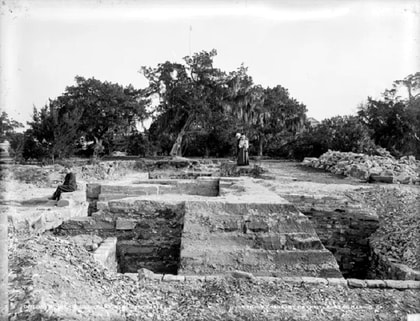 Ruins at New Smyrna c.1904 Ruins at New Smyrna c.1904 The Ottomans resisted his attempt to hire the Greeks, and he returned with about 1,500 workers most of them Minorcans. Minorca is one of the Balearic Islands located in the Mediterranean Sea belonging to Spain. These were indentured servants, who once they finished their indenture would be given a plot of land in East Florida or be given passage to return home. By the end of the summer in 1768, New Smyrna was settled. The work was difficult, and a number of workers died from disease, or met violent deaths at the hands of the Indians. Turnbull’s relationship with his laborers deteriorated as the years went by on account of poor working conditions, and the harsh practices of his overseers. In 1777, the laborers marched northward to St. Augustine to complain to Governor Patrick Tonyn, who provided them with shelter. Were these their remains?  Sightseers at the Ponce Light House c.early 1900s. Sightseers at the Ponce Light House c.early 1900s. A third version of their identity was that they were killed during the civil war, as a number of skirmishes took place in the vicinity of the inlet. When the road was graded through from river to the ocean fifteen years before, a 24 pound cannon ball was dug up in the grading, which had been dropped by a Union gunboat. Charles W. Jones one of the oldest citizens in the town, had once cleared a tract of land where he lived and found a human skeleton. Along with it was a flintlock pistol, a small daguerreotype picture frame and some brass buttons. Some believed these bones were older than the ones Jones found, however there were no clues around them to help in identifying them. They belonged to mature men of average build. The only thing found was a half-buried coral rock that weighed about 10 pounds. Perhaps this had been a marker. The skeletons were under twin live oaks. The rock was about 3 feet south of the tree furthest south and within one foot of the nearest skull. Whether by design or not, the twin oaks stood a step apart, north and south and another step would bring you to the coral rock, and a foot further was the nearest body. 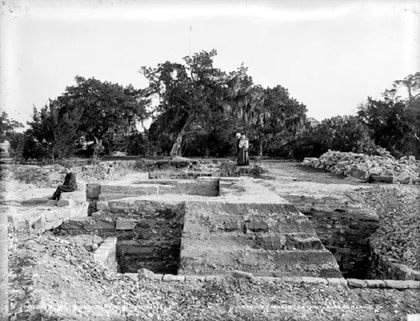 Ruins of fort at New Smyrna c.1904 Ruins of fort at New Smyrna c.1904 There was evidence of foul play, and the bodies were piled on each other as many of the bones of the arms and legs lay crisscrossed, and the skulls of several were in such proximity to indicate a hasty burial or indifference when disposing of the dead. Some of the skulls were whole even to the lower jaw, with many of the teeth and others were cracked and eroded. The remains were only a few inches below the surface, and the roots of a nearby trees and bushes had grown into the skulls through the openings of the eye sockets, and nostrils. Captain Pacetti was sure his father, Captain Bartholi Pacetti had never mentioned any massacre, and he had come to the area in 1843. There was a massacre of shipwrecked people by the Indians south of the inlet shortly after he arrived. Once the Indians left towards the west, Captain Pacetti and the others buried the victims of the massacre. The land in this area had its secrets, and memories long forgotten. There was a shell mound on the land now owned by Theodore Rhodes, which was surrounded by beautiful citrus groves, and bore evidence of having been used as an ancient fort. It had a commanding view and range of the Halifax River. Grandma Sheldon who died of old age at New Smyrna a few years before, told of a place where she played as a girl under the centuries old live oaks. The tree had grown on an old shell mound that came up to her doorstep, and several feet beneath the shells were buried concrete steps and masonry. Undoubtedly the work of a people who lived there long ago. Ultimately it was decided these were the remains of those massacred by the Indians, and any possibility of knowing who they were had long since disintegrated. They were re-buried in an anonymous grave in a potter's field.
0 Comments
Your comment will be posted after it is approved.
Leave a Reply. |
Stranger Than Fiction StoriesM.P. PellicerAuthor, Narrator and Producer Archives
July 2024
Categories
All
|
Stories of the Supernatural
- Stories of the Supernatural
- Miami Ghost Chronicles
- M.P. Pellicer | Author
- Stranger Than Fiction Stories
- Eerie News
- Supernatural Storytime
-
Astrology Today
- Tarot
- Horoscope
- Zodiac
-
Haunted Places
- Animal Hauntings
- Belleview Biltmore Hotel
- Bobby Mackey's Honky Tonk
- Brookdale Lodge
- Chacachacare Island
- Coral Castle
- Drayton Hall Plantation
- Jonathan Dickinson State Park
- Kreischer Mansion
- Miami Biltmore Hotel
- Miami Forgotten Properties
- Myrtles Plantation
- Pinewood Cemetery
- Rolling Hills Asylum
- St. Ann's Retreat
- Stranahan Cromartie House
- The Devil Tree
- Trans-Allegheny Lunatic Asylum
- West Virginia Penitentiary
- Paranormal Podcasts
"When misguided public opinion honors what is despicable and despises what is honorable, punishes virtue and rewards vice, encourages what is harmful and discourages what is useful, applauds falsehood and smothers truth under indifference or insult, a nation turns its back on progress and can be restored only by the terrible lessons of catastrophe."
- Frederic Bastiat
- Frederic Bastiat

Copyright © 2009-2024 Eleventh Hour LLC. All Rights Reserved ®
DISCLAIMER
DISCLAIMER
 RSS Feed
RSS Feed


